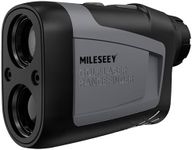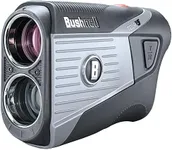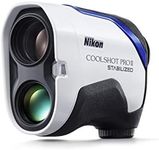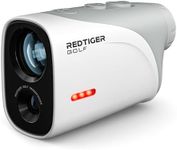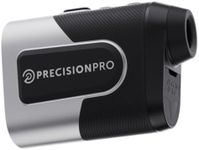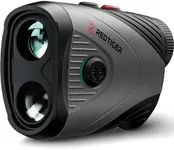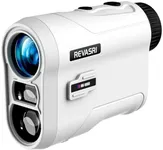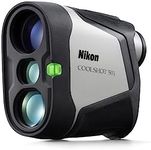Buying Guide for the Best Golf Rangefinders
Choosing the right golf rangefinder can significantly enhance your game by providing accurate distance measurements, helping you make better club selections and improve your overall performance on the course. When selecting a rangefinder, consider the features that will best suit your playing style and needs. Understanding the key specifications will help you make an informed decision.AccuracyAccuracy in a golf rangefinder refers to how precisely it can measure the distance to a target. This is crucial because accurate distance readings allow you to choose the right club and make better shots. Rangefinders typically offer accuracy within a yard or less. For most golfers, a rangefinder with an accuracy of +/- 1 yard is sufficient. If you are a more advanced player or play on courses with challenging layouts, you might prefer a model with even greater precision.
RangeThe range of a golf rangefinder indicates the maximum distance it can measure. This is important for assessing how versatile the device will be across different courses. Rangefinders usually offer ranges from 400 to over 1000 yards. If you play on larger courses or want to measure distances to far-off landmarks, opt for a rangefinder with a longer range. For typical golf courses, a range of 600-800 yards is generally adequate.
MagnificationMagnification in a rangefinder allows you to see distant targets more clearly, which can be particularly useful on large courses or when aiming at small targets. Most rangefinders offer magnification levels between 5x and 7x. Higher magnification can provide a clearer view but may also make it harder to keep the target in sight. Choose a magnification level that balances clarity with ease of use, considering your eyesight and the typical distances you play.
Slope MeasurementSlope measurement is a feature that calculates the angle of elevation or decline and adjusts the distance reading accordingly. This is important for making more accurate shots on hilly courses. Some rangefinders offer a toggle to turn this feature on or off, which is useful for tournament play where slope measurement is not allowed. If you frequently play on courses with varied terrain, a rangefinder with slope measurement can be beneficial.
DisplayThe display of a rangefinder shows the distance readings and other relevant information. A clear and easy-to-read display is important for quick and accurate readings. Displays can be LCD or LED, with some offering additional features like brightness adjustment or color options. Consider a display that is easy to read in various lighting conditions, especially if you often play in bright sunlight or low-light situations.
Size and WeightThe size and weight of a rangefinder affect its portability and ease of use. A compact and lightweight rangefinder is easier to carry and handle during a game. However, smaller models may have fewer features or a smaller display. Consider how you plan to carry the rangefinder and whether you prefer a more portable model or one with additional features that might add to its size and weight.
Battery LifeBattery life determines how long a rangefinder can operate before needing a recharge or battery replacement. This is important for ensuring the device is ready for use throughout your rounds. Rangefinders typically use CR2 batteries or rechargeable lithium-ion batteries. Consider how often you play and whether you prefer the convenience of rechargeable batteries or the simplicity of replaceable ones. A longer battery life is beneficial for frequent players.

